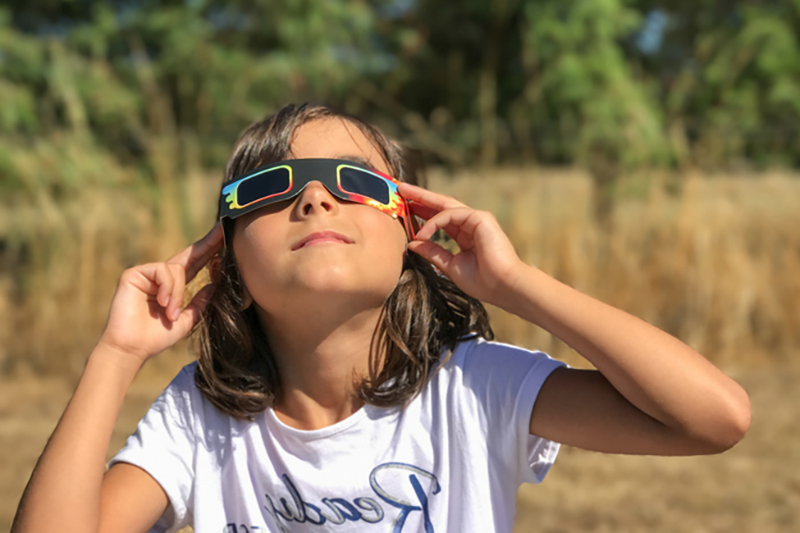Eye safety and a solar eclipse

On Monday, April 8, 2024, residents of Hampton Roads will join the nation in enjoying a rare celestial event: a solar eclipse. Locally, we should see a 60-80% eclipse beginning at 2:02 p.m., maximum at 3:20 p.m., and lasting until about 4 p.m..
While this is an exciting opportunity, it’s also a time to exercise caution, says Shannon McCole, MD, Chair of Ophthalmology and EVMS Foundation Professor in Ophthalmology.
“Given that the next eclipse will be in another 20 years, people wish to observe the moment that the earth darkens and the moon is seen passing in front of the sun, causing the sun to appear like a crescent moon,” she says. “It is critical that observation of a solar eclipse be done properly in order to prevent potential permanent damage to the eyes.”
Never observe an Eclipse with the naked eye!
“A solar eclipse cannot be observed by the naked eye without risking significant permanent retinal damage,” Dr. McCole warns. Here are her suggestions for safe options to observe this rare event:
- Wear specific “solar eclipse” glasses: These glasses decrease the amount of light allowed to reach the retina, to prevent a burn to the internal eye. Use only glasses approved by the International Organization for Standardization (ISO). These glasses will be marked with the ISO 12312-2 mark. Do not use ordinary sunglasses!
- Instead of looking up, look down at the ground in an area with trees: Observe crescent shadows on the ground caused be the leaves partially blocking the sunlight.
- Make a DIY viewer: Cut two square window holes into the short end of a rectangular box, cover one window with foil (taped securely) and make a small hole in the center with a pen. Attach a white paper to the inside of the box, opposite the “windows.” The eclipse can be observed by placing your BACK to the sun looking through the box window without the foil. Light will come through the hole in the foil and the “eclipse” is observed on the piece of paper in the box. Do not look at the sun directly! There are many Youtube videos on how to make such a viewing device.